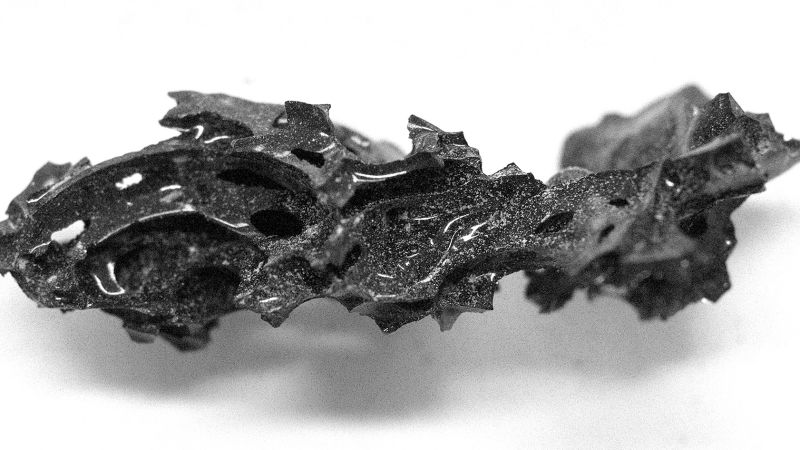In a remarkable discovery that intertwines the fields of archaeology and volcanology, researchers made a significant find in 2020 while examining remains from Herculaneum, a coastal town obliterated by the catastrophic eruption of Mount Vesuvius in AD 79. They unearthed a peculiar black, glassy substance embedded within the skull of a victim, presumed to be a young male who succumbed to the eruption’s devastating effects. This unique glass is believed to represent fossilized brain tissue, offering a rare glimpse into the ancient phenomena of organic materials transforming under extreme conditions.
The research team, led by Guido Giordano, a volcanologist at Roma Tre University in Rome, has since determined the sequence of events that likely led to the fatality of the individual and the glass’s formation. The remains, discovered lying face down on a bed, were encased in volcanic ash, presenting both an opportunity and a challenge for scientists seeking to understand the rapid and violent nature of Vesuvius’s eruption. The researchers conducted meticulous analyses of samples taken from the glass found in the skull and spinal column, which indicated that the victim’s body experienced temperatures exceeding 510 degrees Celsius (950 degrees Fahrenheit) before a rapid cooling event allowed the glass to form — a process known as vitrification.
Giordano elaborated that, “The transformation of any liquid into glass is predicated upon rapid cooling rather than heating.” He drew parallels between the ancient glass and obsidian, a naturally occurring volcanic glass that forms when lava cools quickly, often upon contact with water. Interestingly, the pyroclastic flows that emanated from Vesuvius — composed of fast-moving fluids of volcanic material and toxic gases — likely did not account for the vitrification of this individual’s brain tissues, as those flows are estimated to have reached temperatures no higher than 465 degrees Celsius (869 degrees Fahrenheit) and would have cooled slowly.
Instead, the findings suggest that an extremely hot and quickly dissipating ash cloud may have been the catalyst for the unique transformation of the soft tissue into glass. Giordano, however, acknowledges that the specific conditions required to achieve this transformation remain a source of skepticism among some scientists. The remains of the young man, encased in ash, had additional protection from complete thermal breakdown afforded by the skull and spinal column, which may have facilitated the formation of this unique organic glass.
Ash clouds are frequently mistaken for pyroclastic flows. Giordano clarifies that ash clouds consist of lighter, airborne particles that can achieve lethal temperatures. “An ash cloud is part of the pyroclastic flow that disperses into the air, often formed at the edges, where finer particles are lofted,” he explained. In this case, the young man was enveloped in an ash cloud that may have reached temperatures as high as 600 degrees Celsius (1,112 degrees Fahrenheit), resulting in an instantaneous fatal outcome.
To reach their groundbreaking conclusions, Giordano and his team diligently performed experiments on fragments of the unusual glass. By heating and cooling the samples, they determined that the transition of the brain tissue into glass required temperatures of at least 510 degrees Celsius (950 degrees Fahrenheit). Their work not only sheds light on the volcanic eruption that claimed thousands of lives but also expands the scientific understanding of how organic materials can chemically alter under extreme conditions.
Despite the compelling evidence, some experts remain cautious. Alexandra Morton-Hayward, a forensic anthropologist from the University of Oxford, expressed reservations about the interpretation of the glassy substance as brain tissue, citing the challenging nature of vitrification of organic material. She pointed out that organic tissues, which are predominantly composed of water, typically undergo vitrification exclusively through rapid cooling below zero degrees Celsius (32 degrees Fahrenheit) — a method used in cryopreservation.
Giordano, countering skepticism, asserts the organic nature of the substance, noting that prior research has indicated the preservation of neurons and proteins within the individual’s brain. This ongoing discourse drives further inquiry into the mechanics of brain tissue vitrification and the understanding of past volcanic events, promising to unveil even more about the intersection of archaeology and the natural sciences.



